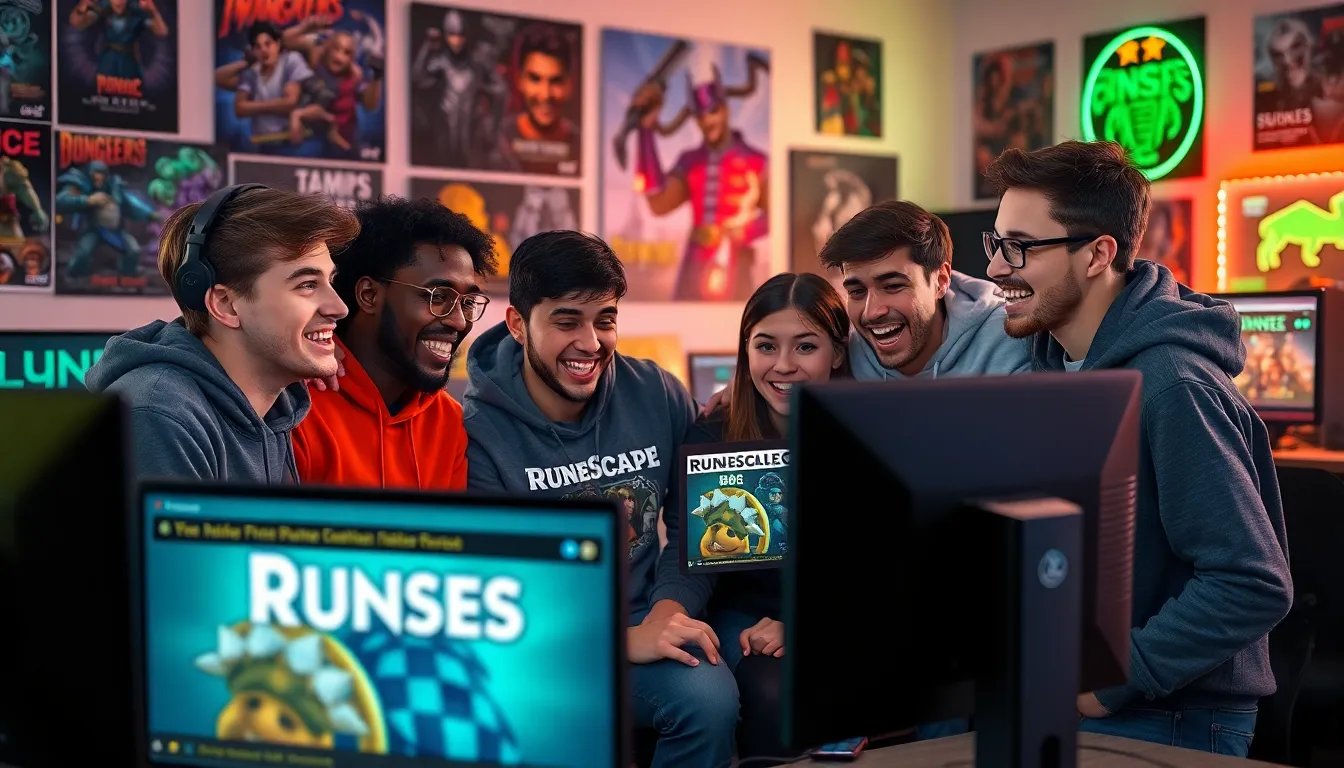In the vast world of Gielinor, where adventurers roam and dragons lurk, the Grand Exchange stands as the beating heart of RuneScape’s economy. It’s the ultimate marketplace where players can trade everything from potions to powerful weapons, all while avoiding the awkward small talk of face-to-face bartering. Who needs a chatty merchant when you can click and collect?
Table of Contents
ToggleOverview of Grand Exchange Runescape
The Grand Exchange serves as the primary economic center in RuneScape. Players can buy and sell a wide variety of items, including equipment, potions, and resources. This system enhances the gameplay experience by allowing trades without needing direct interaction.
Convenience drives the design of the Grand Exchange. It eliminates the complications of negotiating prices with other players. By using the Grand Exchange, transactions occur quickly, making it easier for players to access items essential for their adventures.
In the Grand Exchange, prices fluctuate based on supply and demand. Players observe market trends, which can help maximize profit during trading. Understanding these trends enables players to determine optimal selling times and prices.
Several features simplify trading within the Grand Exchange. Users can easily search for specific items, making the process efficient. An interface displaying recent transaction prices provides valuable data to inform decisions.
The location of the Grand Exchange offers accessibility. Situated in Varrock, players find it easy to reach from various points in the game. Quick teleportation options further enhance convenience for regular users.
Participating in the Grand Exchange encourages economic engagement among community members. Players often engage in discussions about trading strategies and market insights. This interaction fosters a sense of community around the shared goal of wealth accumulation in the game.
History of Grand Exchange

The Grand Exchange has undergone significant development since its introduction. Established in 2007, it quickly transformed RuneScape’s trading landscape.
Introduction of the Grand Exchange
In its initial design, the Grand Exchange enabled players to trade items efficiently without direct interaction. This innovation allowed for smoother transactions. Players could buy and sell a diverse range of items instantly. From potions to weapons, the variety catered to all player needs. The introduction of this feature simplified the economy, setting a standard for player interactions.
Changes Over Time
Over the years, many changes enhanced the Grand Exchange experience. Updates improved the interface, introducing features like price tracking and search functions. Players gained access to real-time market data, further influencing trading strategies. Significant adjustments to item limits and interface design helped streamline transactions. Increased community engagement became evident as players shared trading insights and strategies. Overall, the evolution of the Grand Exchange reflects the dynamic nature of the RuneScape economy.
How to Use the Grand Exchange
Using the Grand Exchange is straightforward, providing players with an efficient way to buy and sell items in RuneScape. Familiarity with the buying and selling processes enhances trading success.
Buying Items
To purchase items, players must access the Grand Exchange interface. Search for the desired item using the search bar or browse through categories. Selecting the item displays its current price and available stock. Players can input a specific quantity and choose to buy at the listed price or set a custom offer. The system instantly processes successful transactions, ensuring seamless acquisitions. Observing market trends assists in identifying the best times to buy. Utilizing the Grand Exchange allows players to stock up on essential supplies like potions and weapons while optimizing their resources.
Selling Items
Selling items involves a similar process through the Grand Exchange interface. First, players locate the item they wish to sell and determine its going rate. Next, they set a price, either matching current market values or undercutting competitors to attract buyers. Adding the item to the exchange allows other players to view the offer. Monitoring sales can provide insights into effective pricing strategies based on item demand. In this way, the Grand Exchange creates a convenient platform for players to convert surplus items into profitable transactions efficiently.
Tips for Maximizing Profits
Maximizing profits in the Grand Exchange requires understanding market dynamics and employing smart trading strategies. Players can improve earnings by staying informed about changes in the market.
Market Trends
Monitoring market trends is crucial for successful trading. Prices for items fluctuate based on demand and supply, making it essential to regularly check the Grand Exchange for current values. Observing item price charts helps identify rising or falling trends. Seasonal events and updates often impact prices, so keeping track of those changes increases profit potential. Players should consider using tools that analyze historical data to better predict future price movements. This approach enables them to make informed decisions about when to buy or sell items.
Item Flipping Strategies
Implementing effective item flipping strategies can significantly boost profits. Start with purchasing items at a low price and selling them when the price increases. Successful flippers often focus on items with high volume and demand. This ensures quicker transactions and steady profits. Setting a target profit margin aids in decision-making, as it helps determine which items to buy and sell. Moreover, using the Grand Exchange’s price alert feature can notify players of favorable changes, allowing timely buy or sell actions. By staying disciplined and maintaining a strategy, profits from item flipping can grow substantially.
Common Issues and Solutions
Players often encounter various issues while using the Grand Exchange. Understanding these challenges and their solutions can enhance the trading experience.
One common problem involves fluctuating item prices. When players notice significant price drops, they may panic about their investments. To tackle this, regular monitoring of market trends helps mitigate losses. Using price charts can guide decision-making and timing for buying or selling.
Another frequent issue is difficulty navigating the interface. New players may find it overwhelming at first. Familiarizing oneself with the layout and practicing basic transactions can alleviate confusion. Utilizing in-game tutorials or guides provides additional support.
Players also face limitations on item quantities. The Grand Exchange restricts how much of a single item can be traded at once. To address this, diversifying item portfolios allows for trading multiple items without hitting limits.
Connection issues may disrupt trading activities. Players experiencing lag or disconnections may miss lucrative opportunities. Ensuring a stable internet connection and checking for server status updates can resolve such problems.
Lastly, scams and misinformation can create distrust in trading. Verifying prices through reliable sources protects against accidental losses. Engaging with the community through forums or Discord groups promotes informed trading decisions.
Addressing these issues can significantly improve the player’s experience in the Grand Exchange, enabling effective trading and profit maximization.
The Grand Exchange remains a cornerstone of RuneScape’s economy offering players a streamlined trading experience. By understanding market dynamics and utilizing effective strategies players can maximize their profits while navigating this vibrant marketplace. With ongoing updates and community engagement the Grand Exchange continues to evolve enhancing the overall gameplay experience. Players who actively monitor trends and adapt their trading methods will find themselves well-equipped to thrive in this dynamic environment. Embracing the Grand Exchange not only simplifies transactions but also encourages a deeper connection with the game’s economic landscape.







